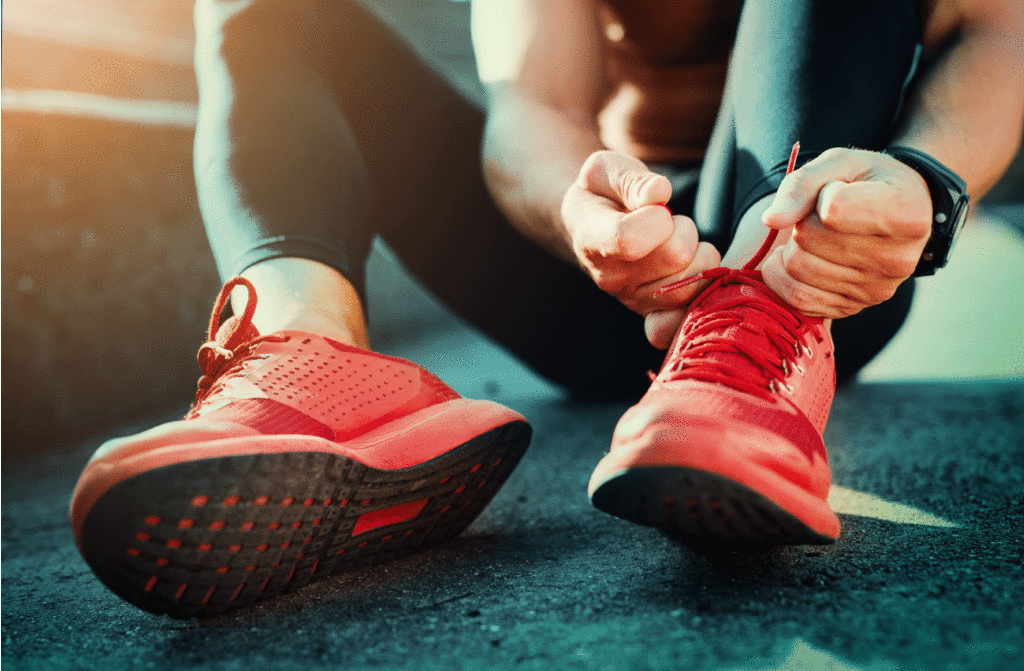Find Your Perfect Pair: Choosing the Right Running Shoes for Faster 5Ks
Any runner chasing a new 5K PR knows that having the proper footwear can make or break performance on race day. With so many shoe options on the market, selecting the ideal pair for your individual foot strike, gait cycle and speed goals may seem daunting. Read on for a guide to choosing running shoes that will have you crossing the finish line faster than ever.
Shoes for Neutral Runners
If you are a neutral runner with a balanced foot strike and mid to high arches, your main priorities in a shoe are flexibility, cushioning and weight. Since your foot rolls through its natural range of motion, look for models with a curved shape and responsive midsole to complement your biomechanics. Lightweight constructions also suit the faster paces you’ll be logging during speedwork and racing. Some top options include:
Brooks Ghost – Soft cushioning and smooth heel to toe transition Asics Gel Nimbus – Plush cushioning with energetic bounce back Saucony Kinvara – Streamlined design with a lively, flexible ride New Balance Zante – Low-profile cushioning paired with soft, fluid feel Hoka Rincon – Maximizes shock absorption and bounce with each step
For neutral runners, cushioning is key to maintaining efficiency even at faster speeds. Aim for around 8-10mm of cushioning depth for protection without excess bulk. Leave the stability features to other runners and opt for flexibility to match your natural foot mechanics on everything from easy jogs to race day.
Shoes for Supinated Runners
Runners with high arches and supinated feet benefit from plush, responsive cushioning and flexibility that complements the outward rolling of their gait cycle. Since impact is concentrated on the outer border of supinated feet, ample cushioning is crucial for shock absorption and comfort. Top shoe picks include:
Asics Gel Nimbus – Soft Gel units cushion each step Brooks Glycerin – DNA LOFT provides softness underfoot New Balance Fresh Foam More – Full-length cushioning for easy miles Hoka Clifton – Maximum cushioning and lively energy return On Cloud – Cushioned Cloudtec pods for soft landings
For supinated runners, prioritize a forgiving foam midsole to soften foot strike and evenly distribute pressure away from the outer feet and ankles. Flex grooves also permit the natural motion of supinated feet. With ample cushioning tailored to your gait, you’ll float through each stride.
Shoes for Overpronators
If you tend to overpronate and roll your foot inward excessively, motion control and stability shoes can offer corrective support for an efficient stride at speed. Key features that prevent excessive inward roll include:
- Firm midsole materials and medial support
- Structural design for straight path of motion
- Reinforcement at midfoot and rearfoot
- Lateral outsole flare for smoother transitions
- Lightweight stability technologies
Some top stability picks are:
Brooks Adrenaline – GuideRails technology controls excess foot motion Asics GT 2000 – Dynamic DuoMax Support System increases stability Saucony Omni – Support Frame provides structured medial support Mizuno Wave Inspire – U4ic foam stabilizes each stride
New Balance Prism – Dual-density medial post helps guide foot
For mild to moderate overpronators, stability shoes allow faster paces while controlling inward roll. Severe overpronators and flat-footed runners may require maximum motion control for redirection. Prioritize support and guidance without overcorrecting your natural foot motion.
Specialized Shoes for Speed
Once you’ve selected the ideal daily trainer for your gait, consider adding a lightweight racing flat or competition shoe to your rotation to really crank up the speed for 5Ks. Racing shoes shed weight by minimizing the upper and stripping cushioning down to just enough for a fast, firm ride. Popular options include:
Nike Zoom Streakfly – Carbon fiber plate for propulsion New Balance 1500v6 – RevLite midsole for responsive softness
Brooks Hyperion Elite 2 – Lightweight DNA Zero cushioning
Saucony Endorphin Pro – Full-length PWRRUN PB foam for speed Asics Metaspeed Sky – Propulsive carbon plate technology
Racing flats promote efficiency for your fastest paces through a close-to-ground feel and snug fit. New “super shoe” models also incorporate carbon fiber plates for maximum energy return. Rotate these shoes into your training for tempo repeats and tune-up races. Come 5K day, you’ll be the one passing others by the first mile mark.
Daily Training vs Race Day
The key to choosing the right run shoes is opting for different pairs based on your training needs:
- Daily trainers – All-around cushioning and support features to log easy, long and recovery miles week-to week. Aim for versatility, comfort and durability.
- Speed/race day shoes – Minimized, lightweight construction to enhance connection and efficiency when running hard. Reserve for key sessions and race day.
Most runners benefit from having both a everyday shoe tailored to foot mechanics and gait as well as a racing flat for PRs and events. Consider adding a recovery shoe with extra cushioning for recovery jogs or long runs when fatigue sets in. Rotate between multiple pairs to keep legs and feet fresh.
Visit a specialty running store for personalized recommendations based on your gait, training regimen and 5K goals. With the properly equipped feet, you’ll be well on your way to new personal bests!
Neutral Shoes





